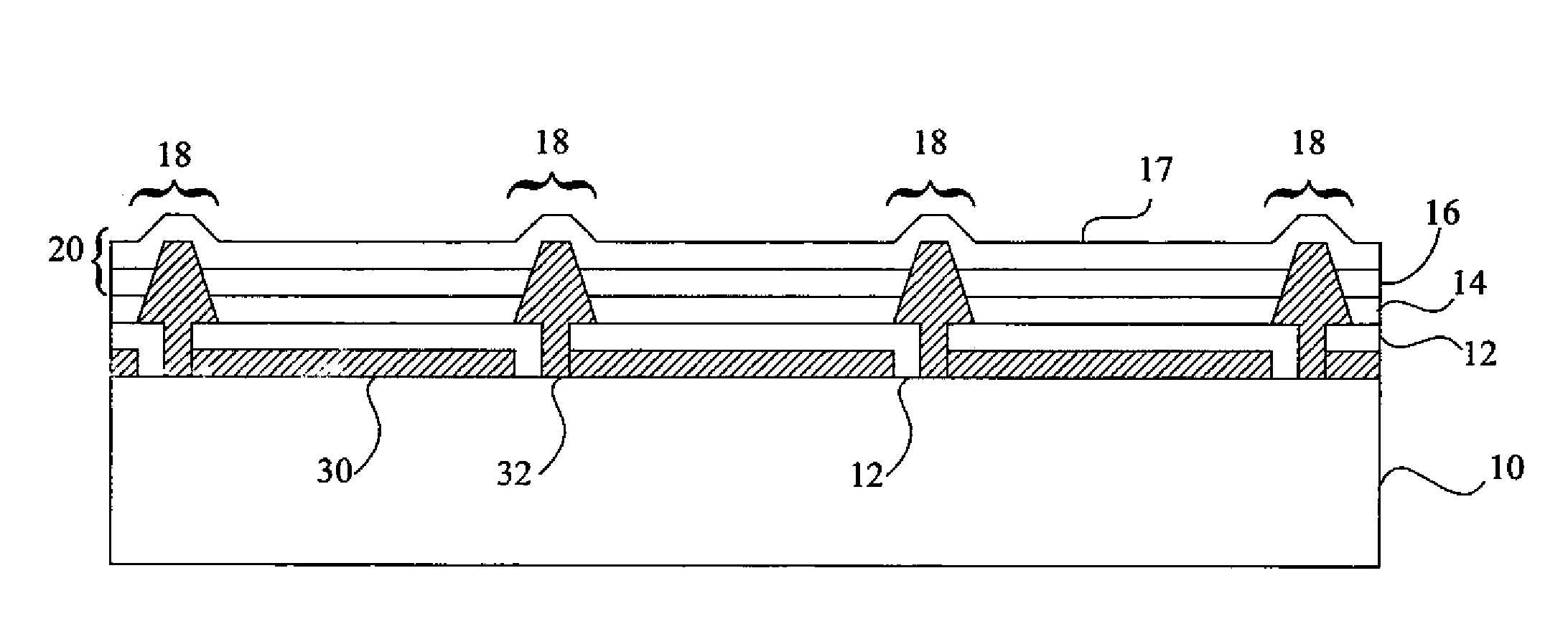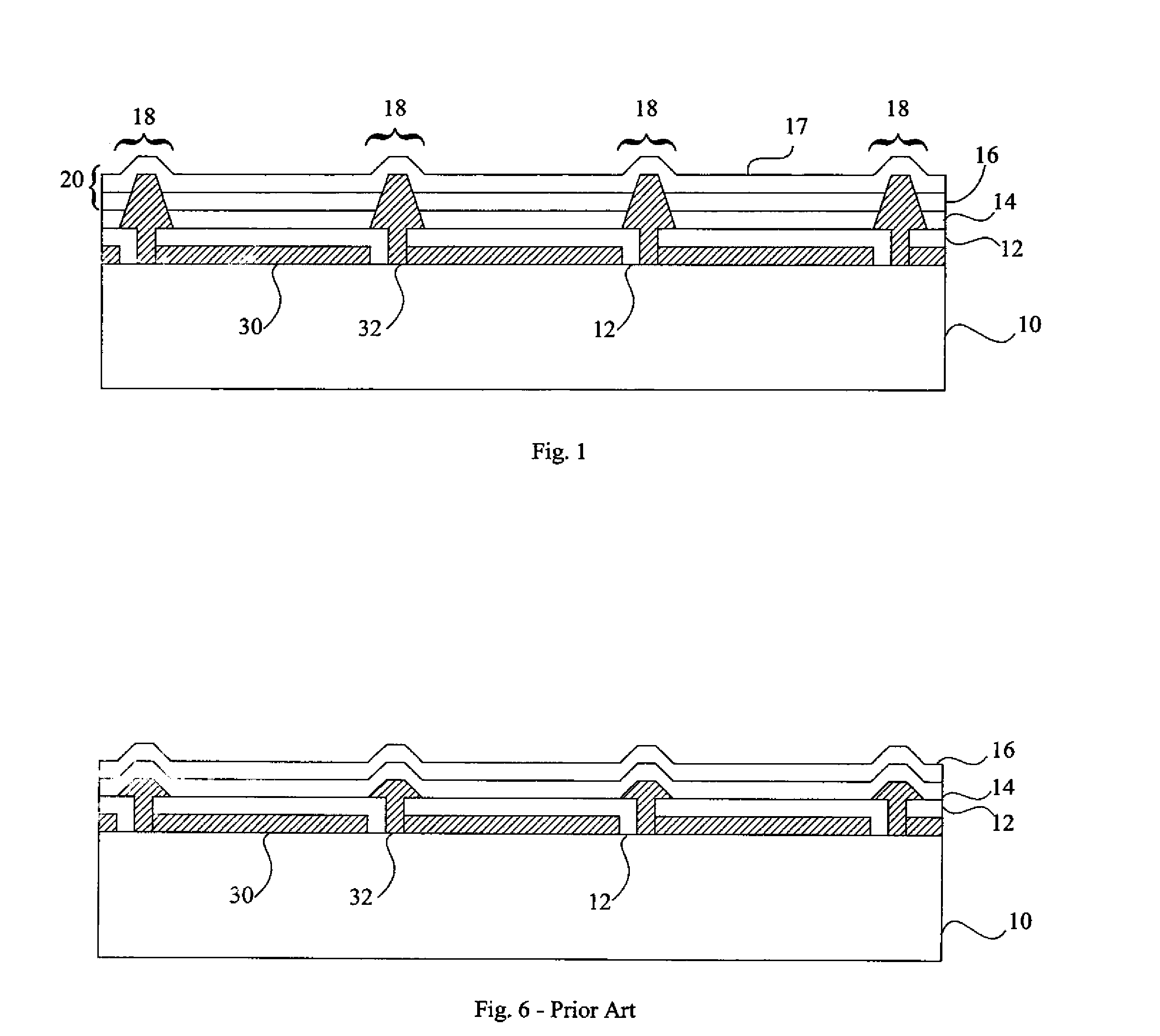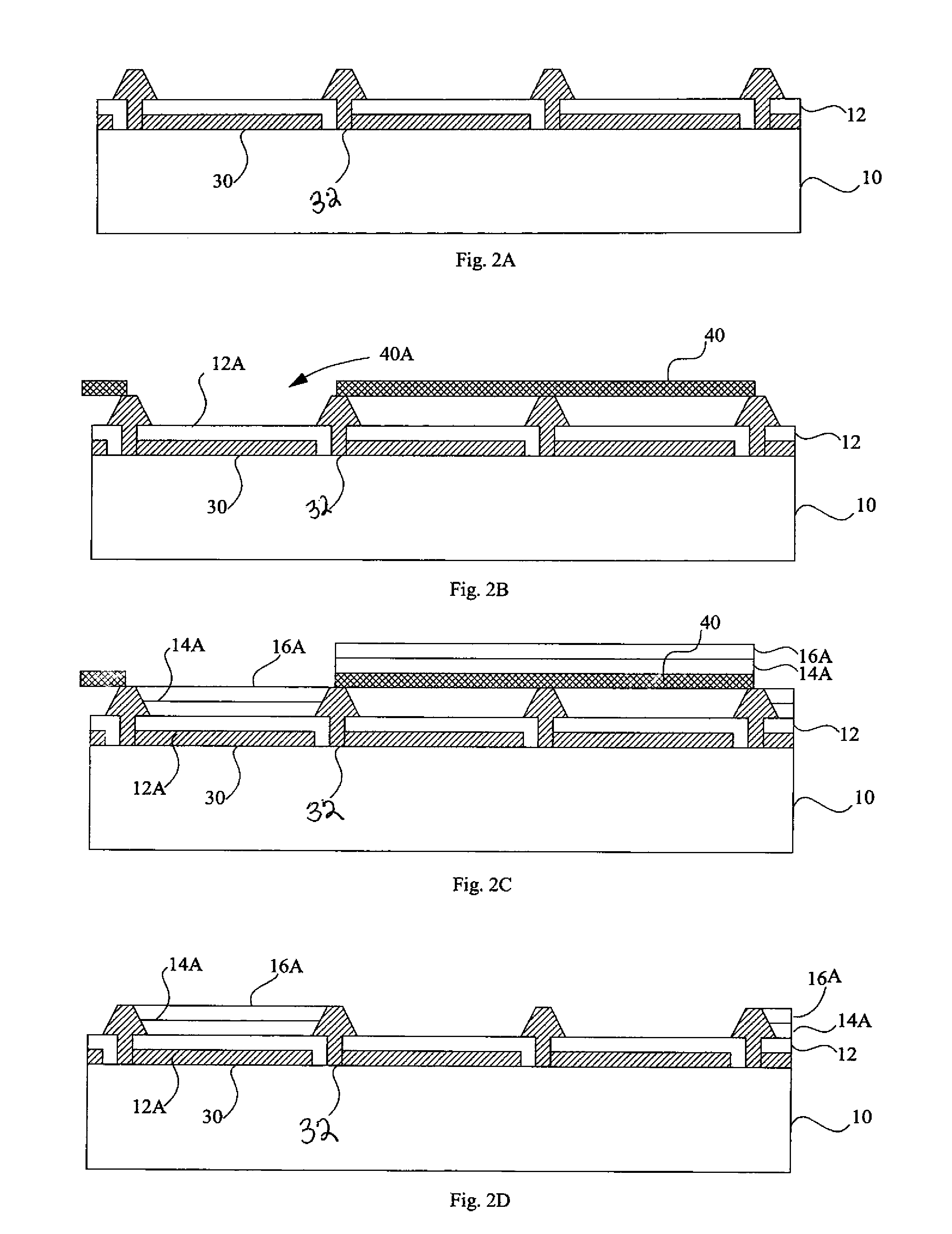LED device having improved power distribution
a technology of led devices and power distribution, which is applied in the direction of discharge tubes/lamp details, organic semiconductor devices, discharge tubes/lights, etc., can solve the problems of difficult fabrication of masks, difficult to fabricate expensive metal shadow masks, and difficult to clean and replace masks
- Summary
- Abstract
- Description
- Claims
- Application Information
AI Technical Summary
Benefits of technology
Problems solved by technology
Method used
Image
Examples
Embodiment Construction
[0028]Referring to FIG. 1, in one embodiment of the present invention, an LED device comprises a substrate 10 on which is formed a plurality of laterally-spaced electrodes patterned over the substrate 10, the pattern forming a plurality of first electrodes 12 separated by inter-electrode spacers 18. One or more light-emitting layers 14 are formed over the plurality of first electrodes 12, and a patterned conductive layer 16 is formed over the one or more light-emitting layers 14 and over the plurality of first electrodes 12, in regions external to the inter-electrode spacers 18. A continuous unpatterned conductive layer 17 is formed over both the patterned conductive layer 16 and the inter-electrode spacers 18, wherein a combination of the patterned and continuous unpatterned conductive layers 16, 17 form a single, bi-layered electrically continuous second electrode 20. By regions external to the inter-electrode spacers 18 is meant that the materials forming the patterned conductive...
PUM
 Login to View More
Login to View More Abstract
Description
Claims
Application Information
 Login to View More
Login to View More - R&D
- Intellectual Property
- Life Sciences
- Materials
- Tech Scout
- Unparalleled Data Quality
- Higher Quality Content
- 60% Fewer Hallucinations
Browse by: Latest US Patents, China's latest patents, Technical Efficacy Thesaurus, Application Domain, Technology Topic, Popular Technical Reports.
© 2025 PatSnap. All rights reserved.Legal|Privacy policy|Modern Slavery Act Transparency Statement|Sitemap|About US| Contact US: help@patsnap.com



